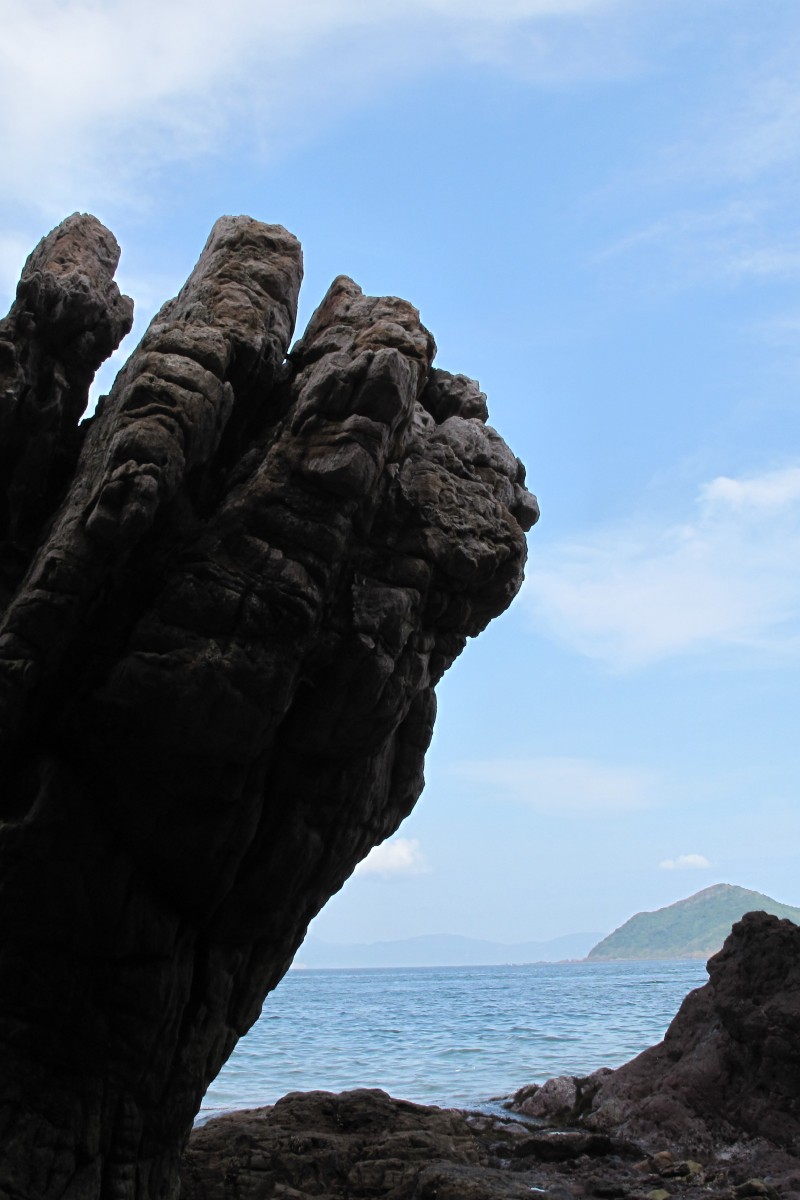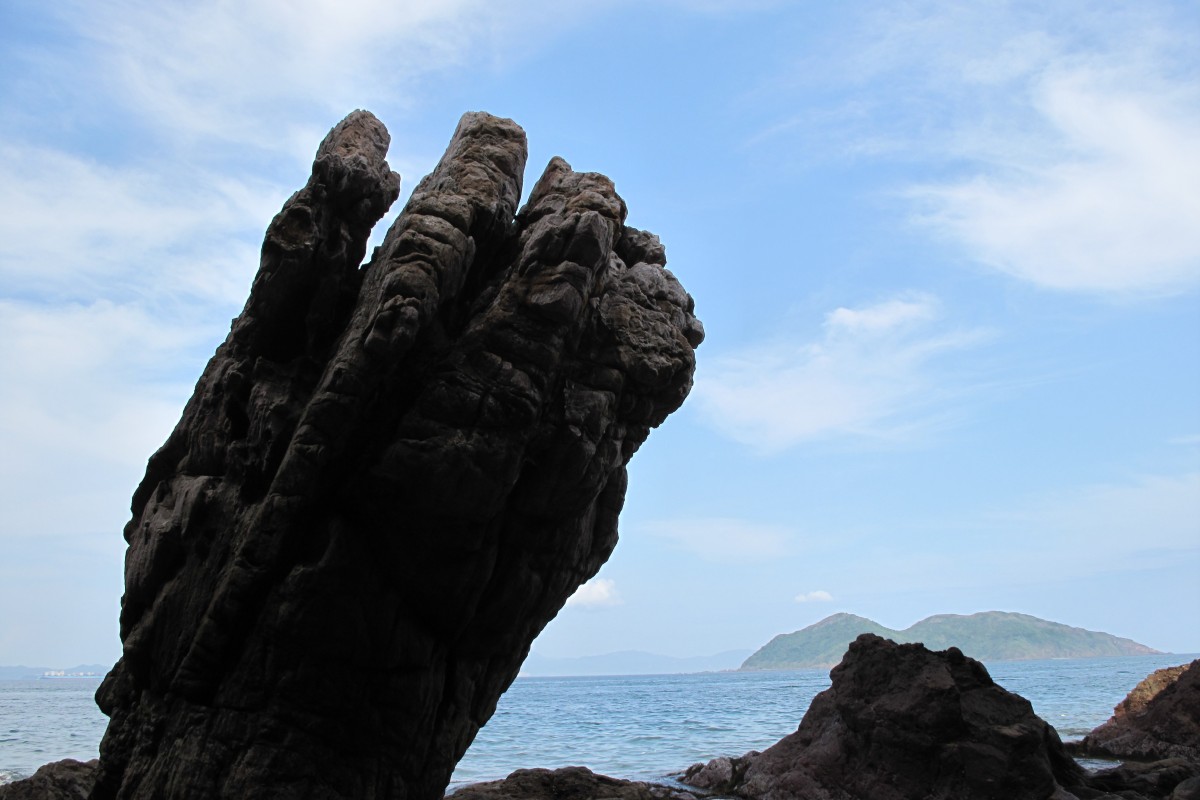
From Amah Rock in Lion Rock Country Park to the Devil's Fist at Bluff Head, explore these scenic rock formations during the Chinese New Year holiday
 Devil's Fist is believed to be Hong Kong’s oldest rock.
Devil's Fist is believed to be Hong Kong’s oldest rock. Hong Kong is one of few places in the world where you’ll find the city and nature in such close proximity. While our city is famous around the world for its urban skyline, about three-quarters of it is made up of mountains, according to Lonely Planet.
Some of these rocky areas are home to a few geological gems. Hong Kong’s rock formations not only hold significant historical value, but make awesome scenic spots as well. If you’re planning to go nature exploring during the Lunar New Year holiday, here are five rock structures that you should definitely check out.
Devil’s Fist
Located just north-east of Tolo Harbour at Bluff Head, Devil’s Fist is Hong Kong’s oldest rock. It began forming from layers of sediment some 400 million years ago during the Devonian period, about 200 million years before the age of the dinosaurs.
As its name suggests, Devil’s Fist looks like a hand rising from the waves. Constant weathering and erosion gradually created the “fingers” of the rock, while sea waves carved out the “wrist” shape at its base. The formation used to lie on its side, but because of the movements of the earth’s crust, it was tilted so that it now stands vertically.
You're missing out if you haven't discovered the hidden gems and history of Tsuen Wan
Devil’s Fist makes for a great photo op, but make sure to visit the spot at low tide, when the entire formation is visible.
Getting there: from Exit B at University MTR Station, head to the Ma Liu Shui Ferry Pier and take a Number 3 ferry to Bluff Head (Wong Chuk Kok Tsui). The journey should take around 90 minutes. The ferry only runs between 9am and 3.30pm on Sundays and Public Holidays.
High Island
Just a 40-minute ride from Sai Kung Town is High Island, which boasts a striking collection of hexagonal rock columns.
Standing as tall as 30 metres, these rocks began to form from lava during the Cretaceous period, around 140 million years ago, according to the Hong Kong UNESCO Global Geopark. This means they appeared just before dinosaurs like Shanxia and Tyrannosaurus Rex began roaming the Earth. Back then, the geopark still had active volcanoes. One eruption caused the mouth of the volcano to collapse, creating a caldera that filled with volcanic ash, lava and rock fragments.
As the rocks cooled, cracks began to run down them, creating the series of hexagonal columns that we can see today.
Getting there: take a Green Minimus No. 9A from Pak Tam Chung Bus Terminus to High Island Reservoir (East Dam). The minibus runs between 3 and 6pm on Sundays and public holidays.
Leung Tin Au Canyon (Pineapple Mountain)
Although it is much smaller in size, Leung Tin Au Canyon in Tuen Mun somewhat resembles the Grand Canyon in the US state of Arizona, and is often referred to as the “Grand Canyon of Hong Kong”. The canyon’s bumpy surface, which takes on a golden hue during sunsets, also reminds people of Hong Kong’s own pineapple bun, earning the canyon its nickname.
Pineapple Mountain was formed by volcanic breccia, broken fragments of rock glued together by fine minerals.
Getting there: Take the Light Rail from the MTR West Rail Station at Siu Hong to Leung King Station. From there, it is around a 40-minute hike to the canyon.
Amah Rock
Perched on a hill in Lion Rock Country Park, in southwest Sha Tin, Amah Rock is easy to spot thanks to its unusual shape, which resembles a woman carrying a baby on her back.
The structure is formed by several tors, free-standing rocks that jut out of the surrounding landscape, and stands at 15 metres tall.
Its Chinese name, Mong Fu Shek, literally means “the stone gazing out for her husband”. According to a well-known myth, a fisherman’s wife climbed up to the mountain everyday with her son to wait upon her husband’s return, not knowing that he was already dead.
Fruit bats and otters and owls, oh my! Meet Hong Kong's amazing nocturnal animals
Touched by her faithfulness, the Goddess of the Sea decided to transform her into a rock so her spirit could forever be with her husband’s.
Amah Rock was rated as the most beautiful rock in Hong Kong, according to the Hong Kong UNESCO Global Geopark.
Getting there: Walk from the Lion Rock Tunnel Road entrance to Lion Rock Country Park.
Tortoise Rock
At the southernmost tip of Hong Kong lies Po Toi Island, the city’s “South Pole”. The island is almost entirely made of granite, the most commonly-found type of rock in Hong Kong. Because this granite erodes easily in the wind and rain, the rocks on Po Toi have been weathered into all sort of peculiar shapes. Tortoise Rock is just one of the structures which can be found on the island. As it name suggests, it looks like a gigantic tortoise crawling towards the mountain top.
Getting there: Take a ferry from Aberdeen Pier. Ferries operate on Tuesdays, Thursdays, weekends and public holidays. It takes about an hour to get there.
